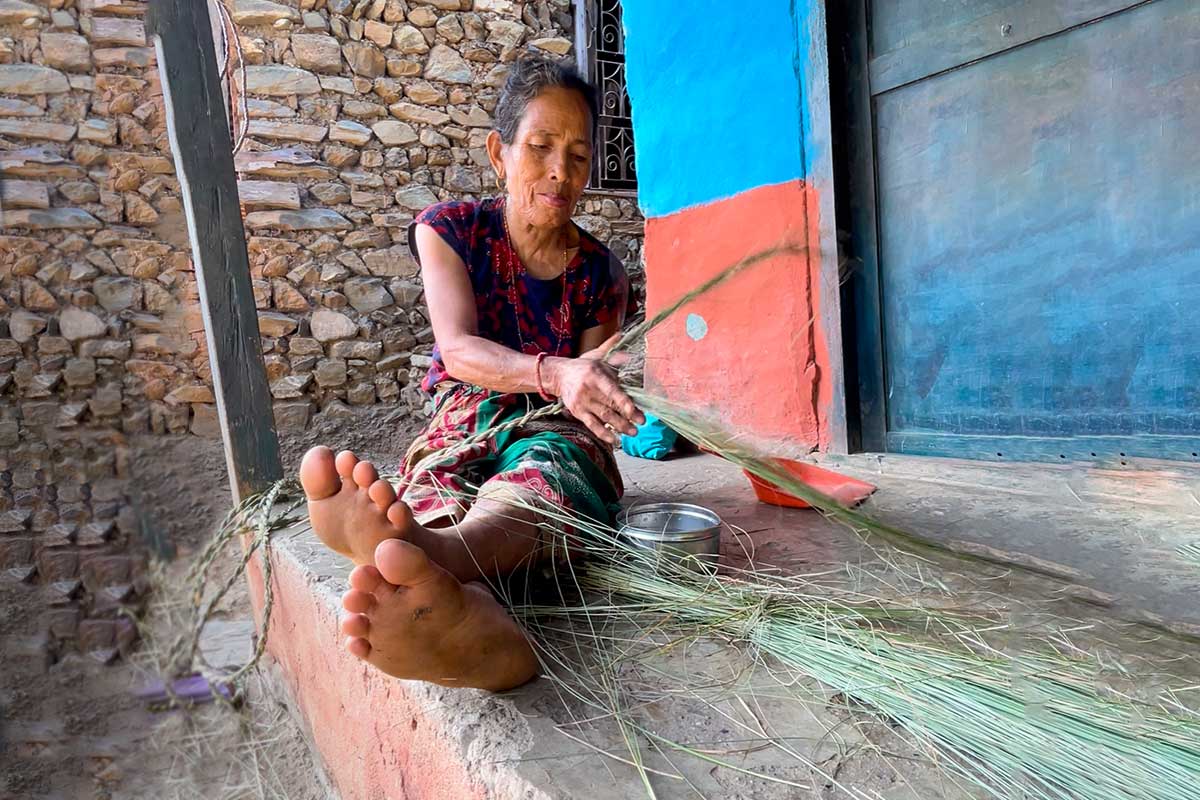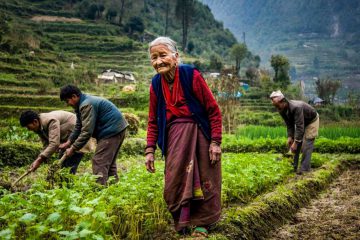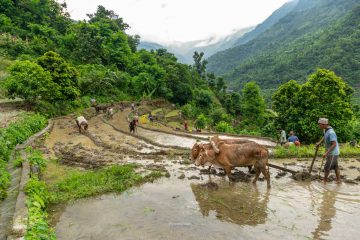In rural villages of Nepal, Babiyo grass which has long leaves is used to make rope which is then used to tie things. In Dashain festival bigger rope from Babiyo is used to make a swing called “Lingey Ping”. Also used to make handicrafts like baskets and manufacture paper.
Although villagers used other grasses like Khar, bamboo and other vines to make rope, rope from Babiyo grass is considered the strongest.
Scientifically Babiyo grass is called Eulaliopsis binata and grown in many Asian countries like China, Nepal, India, Pakistan, Bhutan, Myanmar, Thailand, Malaysia and Philippines.
It is also called Sabaigrass or Chinese alpine rush, and in India it’s called Bhabhar.
But with the ease of availability of factory made goods like plastic rope and baskets, the use of such local and eco-friendly products is decreasing. With it also the skill of making ropes from grass is disappearing.
From the next generation it’ll be hard to see such village skills in Nepal.
Uses of Ropes Made from Babiyo Grass
House Construction: In the past (around 2-3 decades) ago when tin roofs were not readily available, houses in the villages used to have thatched roofs. And to tie them people needed ropes, since factory made plastic or jute ropes were not easily available, villagers used rope made from Babiyo grass which is considered one of the strongest.
In Decoration: Similarly in the rural villages people used rope made from Babiyo weaved with locally available flowers and leaves, which is called “Toran”, and used as a decorative item like prayer flags or classic triangle multicolor flag rope.
It was used to decorate Cow shed during Gai Tihar festival and also houses during auspicious puja or festivals by tying the rope around the property or tying on the ropes.
And villagers used to compete on who has the longest Toran (decorative rope made from Babiyo grass along with flowers and leaves).
Making Handicrafts: As the Babiyo rope was considered one of the strongest, it was used to make handicrafts like weaving baskets and making mats like Gundri.
As a Regular Rope: And as we know the Babiyo rope is strong, it was used as a regular rope to tie things on a daily basis.
Benefits of Using Rope from Babiyo Grass
Use of Local Resource: The Babiyo grass grew in the wild and using it meant the optimum utilization of locally available natural resources.
Economical: Since the grass grew naturally in the wild, villagers didn’t need to pay for it. They just cut it and use their skills to make rope or handicraft. Thus it was more economical than any other factory made ropes.
Eco Friendly and Sustainable: Since Babiyo grass was 100% organic and natural, the product made from it (either rope or handicraft) was eco-friendly. And people only used the grass as per their personal needs, thus it was sustainable as well.
Going Extinct
Though the use of rope from Babiyo grass had tons of benefits to humans and nature, the use of it is declining and is on the verge of extinction.
With the ease of market accessibility and factory made products, the Babiyo ropes are being replaced by plastic ones.
Since the process of making ropes from Babiyo grass took a long time (Cut the grass from wild and then convert it into ropes) and is labor intensive, villagers these days started preferring buying plastic ropes from nearby markets.
Along with the decline in the use of Rope made from Babiyo grass, the skill to convert grass into rope is disappearing like other traditions (Parma, Guhaar, Moluwa, etc.). Probably our generation will be the last ones to have this skill and also either see or use it.
In Summary
Making rope from Babiyo grass is a traditional and eco-friendly practice in rural Nepali villages. It serves multiple purposes, from house construction and decoration to making handicrafts and everyday tying.
But the declining use and skill of making Babiyo grass ropes pose a threat to a valuable, sustainable, and traditional practice.
Do you think this valuable tradition should be preserved, or is it inevitable that modern alternatives will replace it?
Let us know your thoughts on it and share it with your family and friends if you believe it’s worth preserving.
Video of Making Rope from Grass
In this video you can see elderly at Khasrang Village making rope from Babiyo grass and reminiscing the old days where they used to make rope and use it to make mats (Gundri) from hay (dried rice plant).




